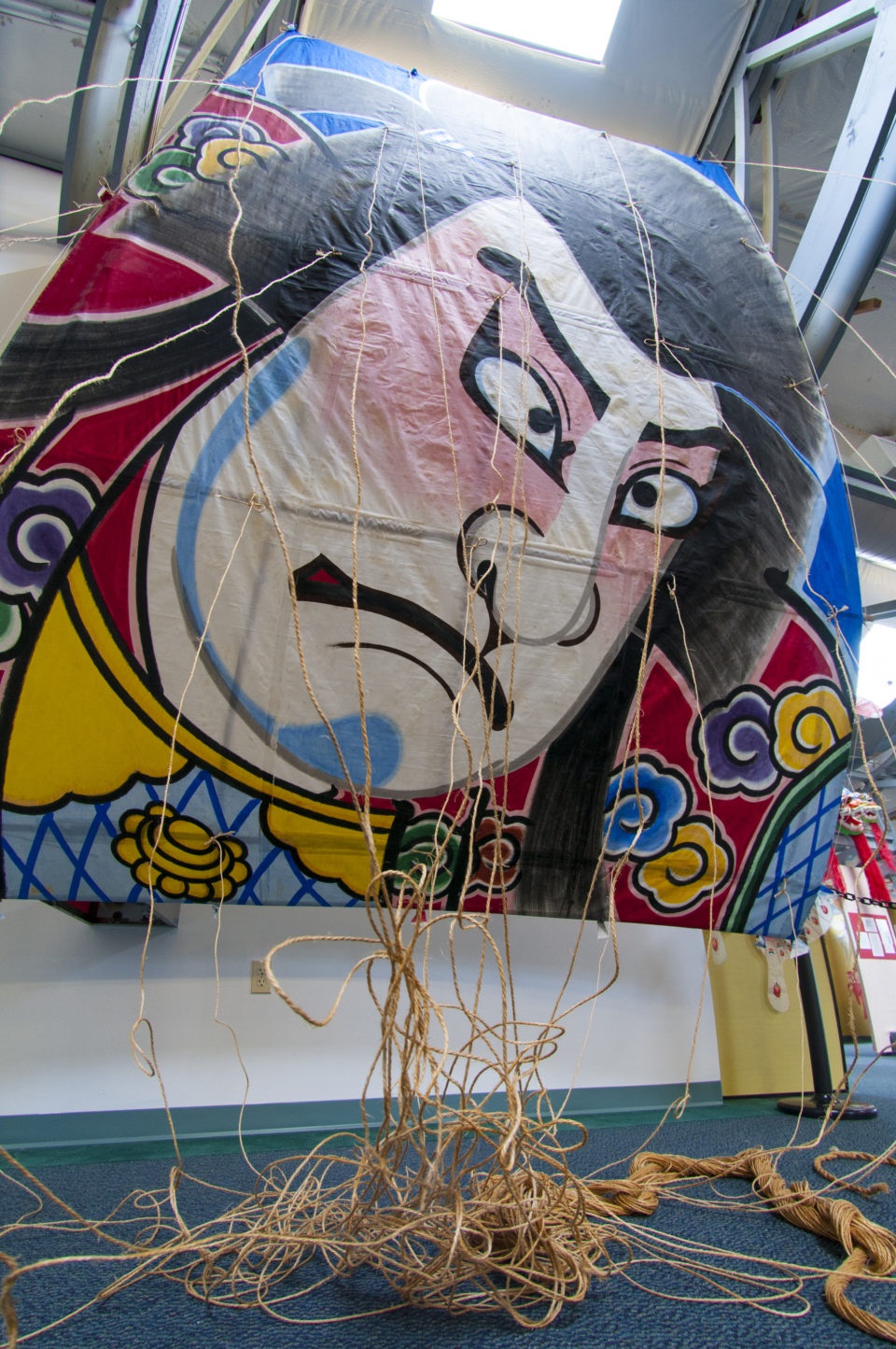
This is one of the larger Japanese kites, which would be pulled by a team.
Strolling through the World Kite Museum in Long Beach one April day, it’s hard not to feel like you’re soaring into the skies alongside the many multi-colored kites that cover the walls.
In the rotating exhibit on the museum’s second floor, the walls and high ceilings currently display Asian kites depicting animals, samurai and a few characters from Chinese folklore, including the Monkey King. Some of these flying contraptions are more like statues made out of fabric, such as a galloping white horse and a massive pink bird with outstretched wings that’s strangely lifelike.
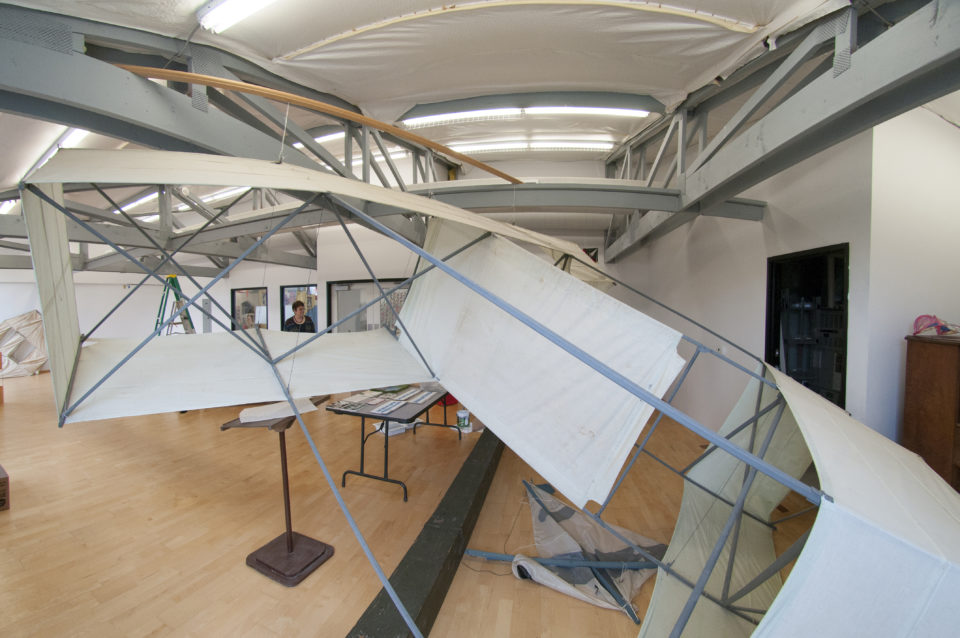
Patty Rolfe, business administrator and store manager, oversees the installation of the museum’s spring display of vintage giant Japanese kites.
Touted as the only dedicated kite museum in the Western world, the otherwise basic wooden building near the beach contains thousands of kites. Many of those on display are international, ranging from Indian kites designed for fighting with each other, to massive box kites used in World Wars I and II for artillery shooting practice – or for flying cameras up high to take pictures.
It’s like a world-class art museum, says staffer Jane Holeman, who also co-chairs the International Kite Festival in Long Beach each August. “Just the slightest amount of dampness, and some of these would fall apart; so we really work to preserve them,” she says.

The museum is located a short walk from the beach.
One major component of the museum is the International Kite Hall of Fame.
A panel of six committee members from around the world collaborated regularly from 1989 to 2015 to nominate and then vote on people and organizations that have influenced kiting in a significant way. Holeman says she’s working on getting the committee going again to add new inductees.
Inaugural Hall of Famers include the first kite flyer, who isn’t named, but was documented in China in the fourth century B.C.; and Dominia Jalbert, an American who invented the parachute-style kite. There have even been fictional inductees, such as cartoon character Charlie Brown, who always got his kites stuck in a certain ravenous tree.
The museum also offers other ways to brighten up a dreary day.
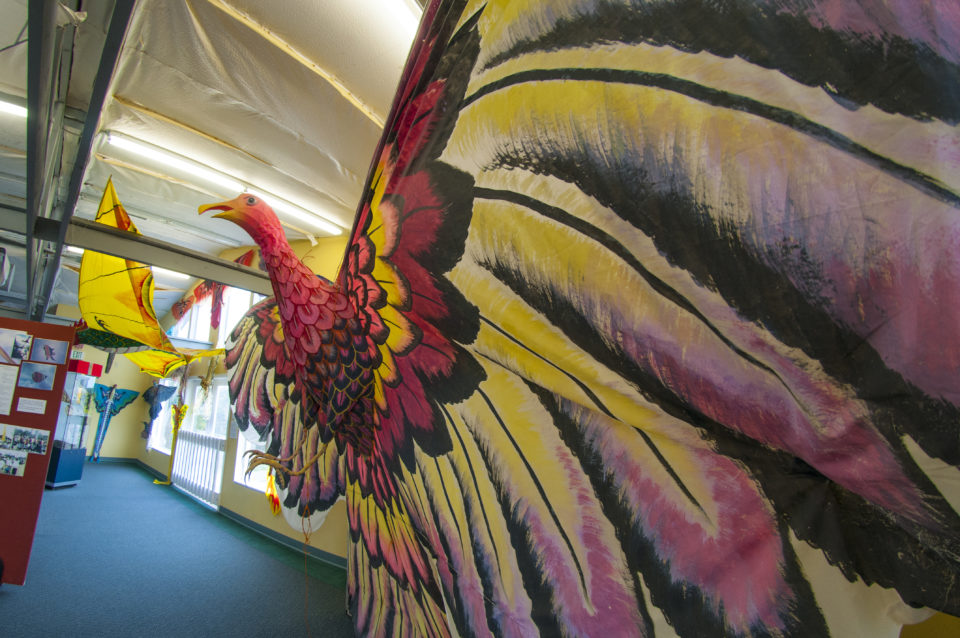
One of the colorful kites on display depicts a massive pink bird with outstretched wings.
A first-floor gallery displays all manner of kite-related art. And in the large retail shop, visitors can browse numerous types of kites with a broad price range.
There’s even an area where visitors can make their own kites.
Next to the small theater area and gallery sits a table where visitors can use plastic sheets, thin wooden dowels, string, tape and ribbons to create kites (and tails). All the materials are provided, and there’s no extra fee. There’s also a pre-made plastic kite propped up in that area with instructions written on it, explaining where tape should be used to attach the plastic to the wooden dowels, which makes it easier for young children.
Holeman said the station might switch from plastic to construction paper in the future, in order to go along with the rising trends in some cities to ban plastic bags in favor of paper to help reduce waste.
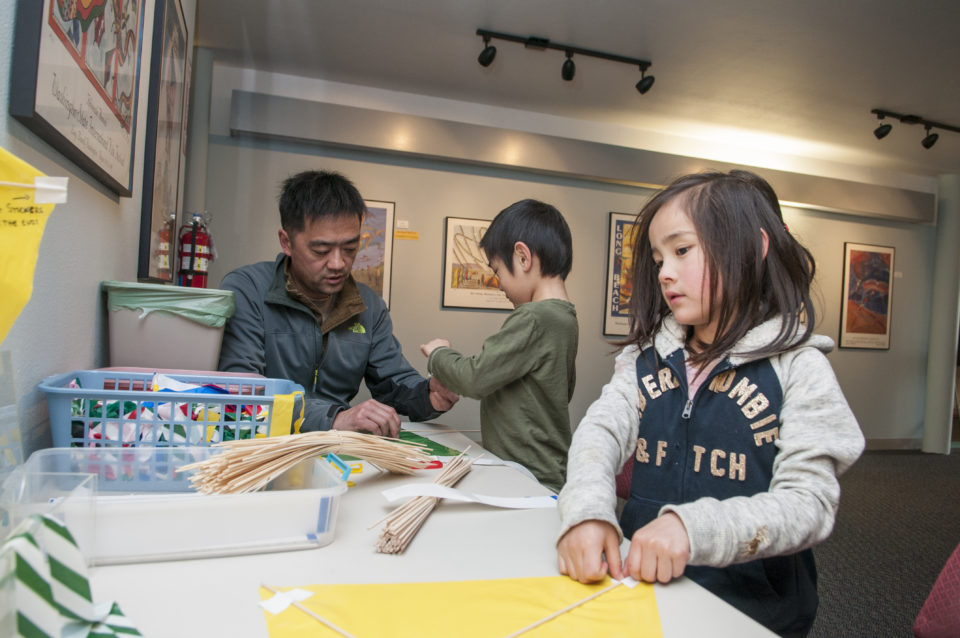
Yue Teng of Olympia watches as his children, Eddie (4) and Emmalyn (6), make their own kites using materials supplied by the museum.
The museum wasn’t always this expansive.
Many of its Asian kites were donated by David and Dorothea Checkley, who spent years traveling through Japan, China and Indonesia in the 1980s, amassing what’s regarded as the largest collection of Asian kites in the U.S., Holeman said. The couple went to Kay and Jim Buesing, who had a wealth of knowledge about kites, and convinced them to push to establish a kite museum in Long Beach.
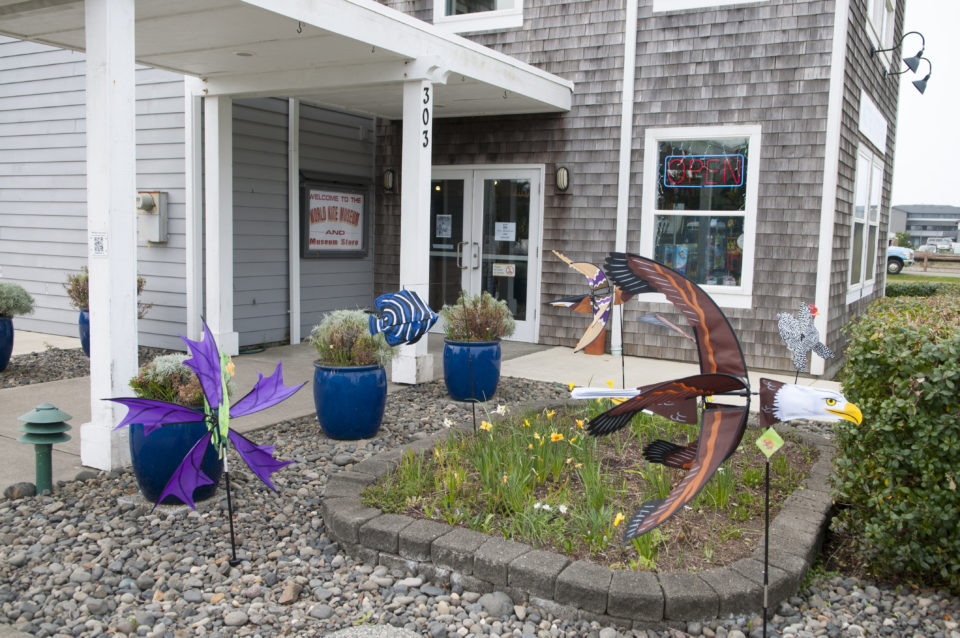
A few kites are mounted outside the museum to catch the wind.
The museum was founded in 1989 in a much tinier building owned by the city of Long Beach, where exhibits were cramped and very little could be shown.
That changed in 2005, when the museum moved to its current location on Sid Snyder Drive, not far from the beach approach. The building had been intended for a candy factory that never materialized; it went into foreclosure and was bought by a health club that later went out of business. After some state grants were awarded for the museum and negotiations were held with the building’s owners, it ended up being donated to the city for that use.
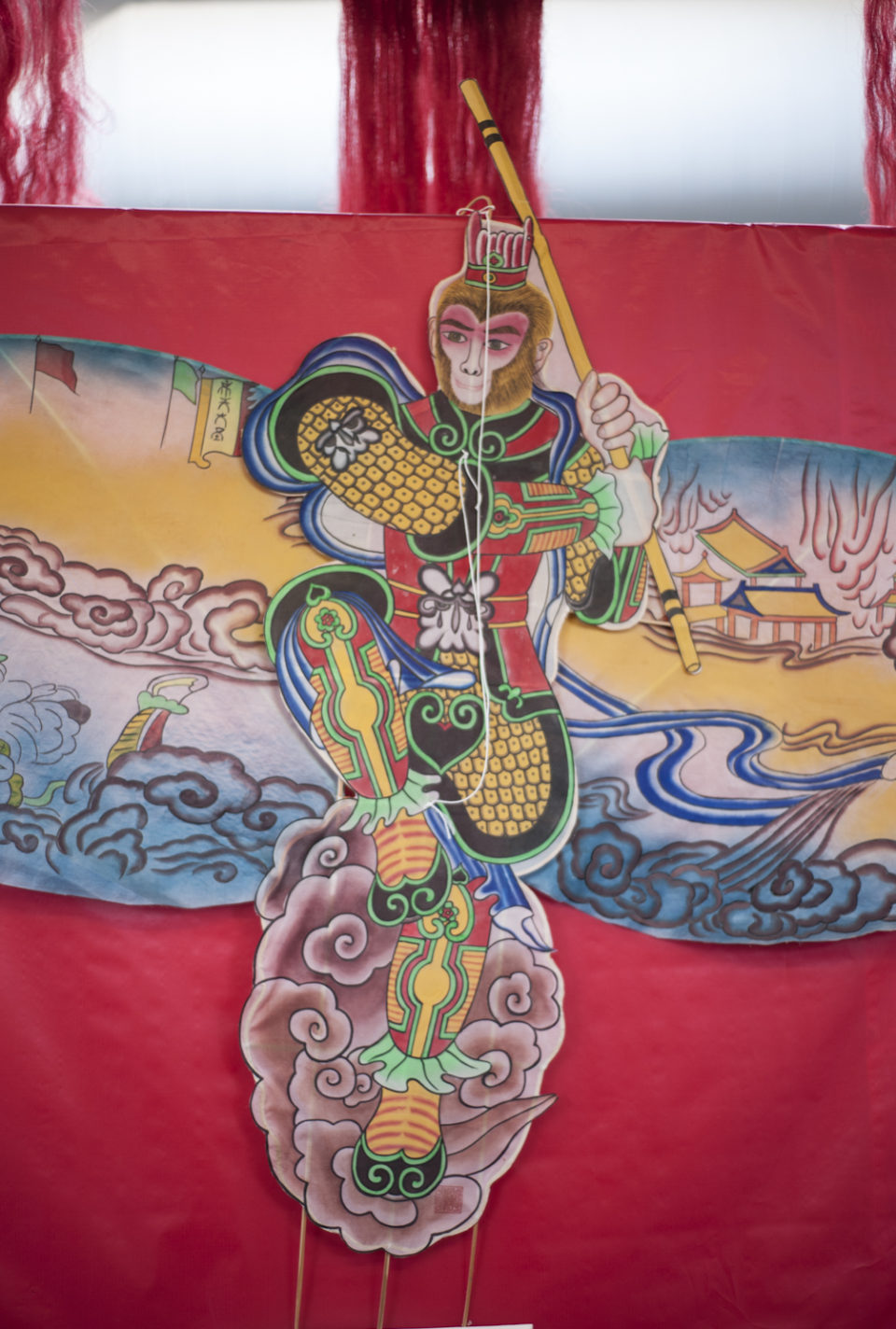
The Monkey King is among the mythical characters depicted on the highly detailed Asian kites on display.
Included in the first-floor art gallery are all of the posters for the annual Washington State International Kite Festival, which has been staged in Long Beach every year since 1981.
On the third week of August (this year, it’s Aug. 19-25), 25,000 to 30,000 people attend the festival, one museum staff member estimated. It is centered primarily on the area where Bolstad Avenue intersects with the beach, and extends southward from there.
Part of the impetus to start a kite festival came from Harry Osborne, a professor at Edmonds Community College near Seattle, who was looking for a place to fly a record-breaking giant kite he was constructing with his students.
Holeman says the city of Long Beach “rolled their eyes, but agreed and went, ‘Fine, go down there.’”
The first festival was tiny, with just eight or 10 people. A flatbed truck loaned by a cranberry grower was driven onto the beach with a boombox on it to serve as the PA system.
Osborne didn’t fly his massive kite until the fourth annual festival. The city of Long Beach had to drive backhoe excavators onto the beach to anchor it with a rope that Holeman says was as thick as her arm.
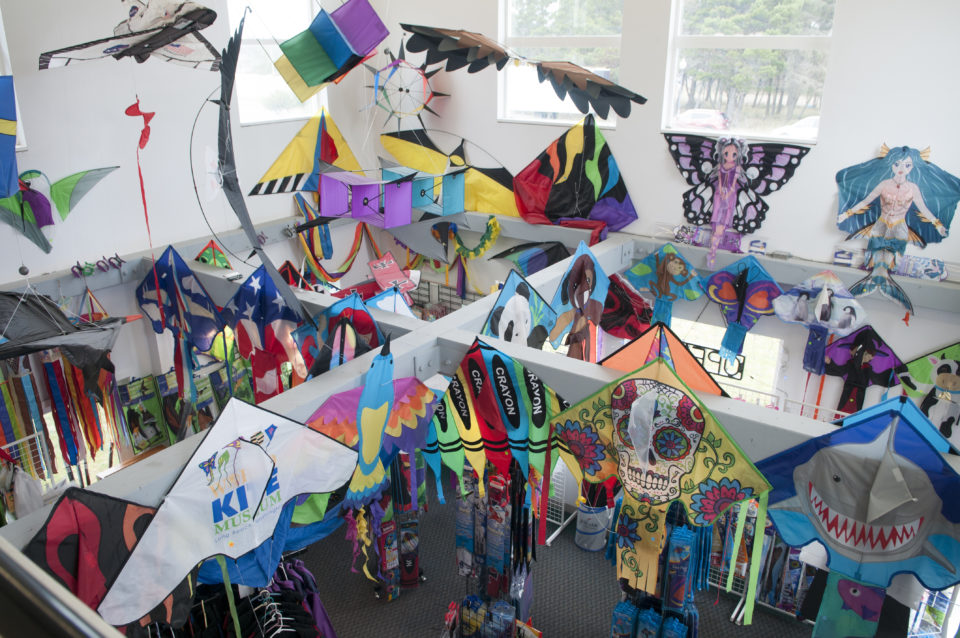
The museum shop sells kites of many colors, types and sizes.
But tragedy struck that day in 1984 as a safety officer was walking near the kite rope, telling viewers to be careful, according to Holeman’s account. A gust of wind jerked the massive kite upward, and the rope wrapped around the safety officer’s leg, carrying him 125 feet into the sky, she estimates.
“If he’d just hung on, they would’ve brought him down,” says Holeman. “But he unwrapped the rope from his leg, and fell to his death.”
Holeman says Osborne viewed the accident as his personal responsibility and was never involved in kiting again, as far as she knows.
But the annual festival continued – and it has grown significantly, attracting kite enthusiasts from as far away as China, India and New Zealand.
Perhaps most iconic is the large kite area, where gigantic colorful kites fly all day long, anchored in the sand. Their owners have to check in before 9 a.m. each day, park on the beach and stay there all day to monitor their kites. Some areas also are roped off for demonstrations with sport kites. As many as 500 kite flyers register for the week, Holeman says.
A little more extreme is the kite buggy area, where large parachute kites pull people around in three-wheeled karts at high speeds.
Also featured are kite-making workshops, kite photography competitions and kite fighting. The kite fighting utilizes Japanese traditional six-sided kites, known as Rokkaku kites, and the objective is to knock others out of the air.
Holeman says a possible addition to this year’s schedule is a Portland-based enthusiast who’s interested in running a coordinated kite demonstration, in which 129 people would fly four-line sport kites in synchronized movement.
For up-to-date information on this year’s festival, visit kitefestival.com/kite-festival-program.
World Kite Museum
303 SW Sid Snyder Drive, Long Beach
worldkitemuseum.com
360-642-4020
Hours: 11 a.m. to 5 p.m. Fridays through Tuesdays
Admission: $5 for adults, $4 for seniors, $3 for children ages 3 to 16